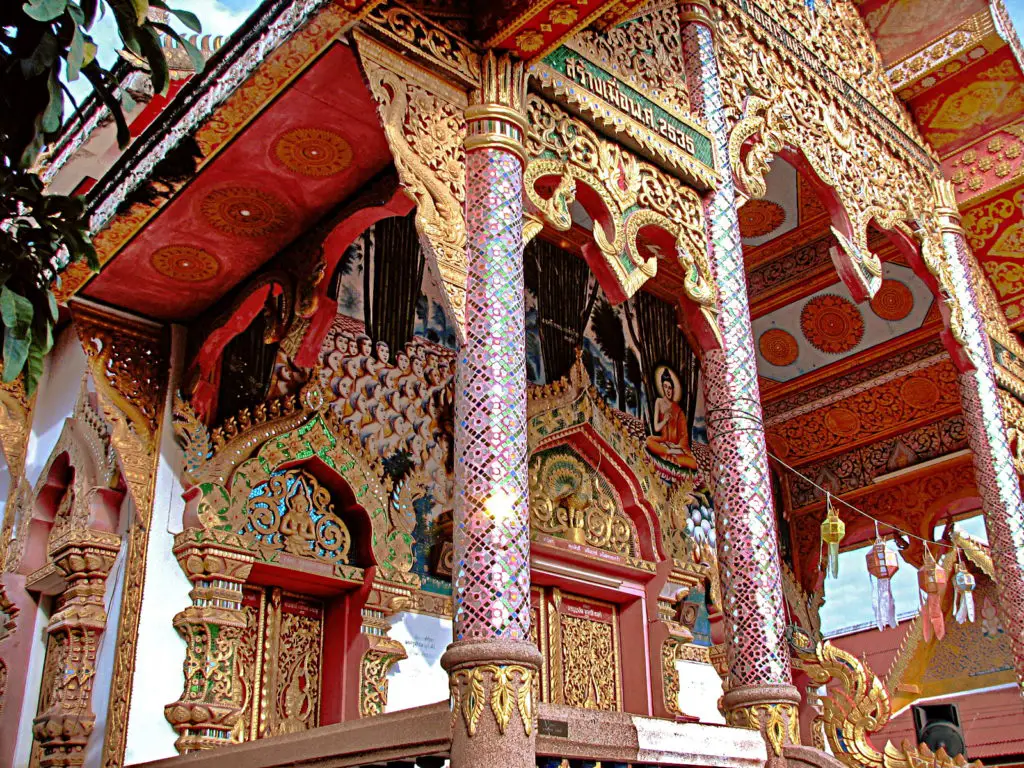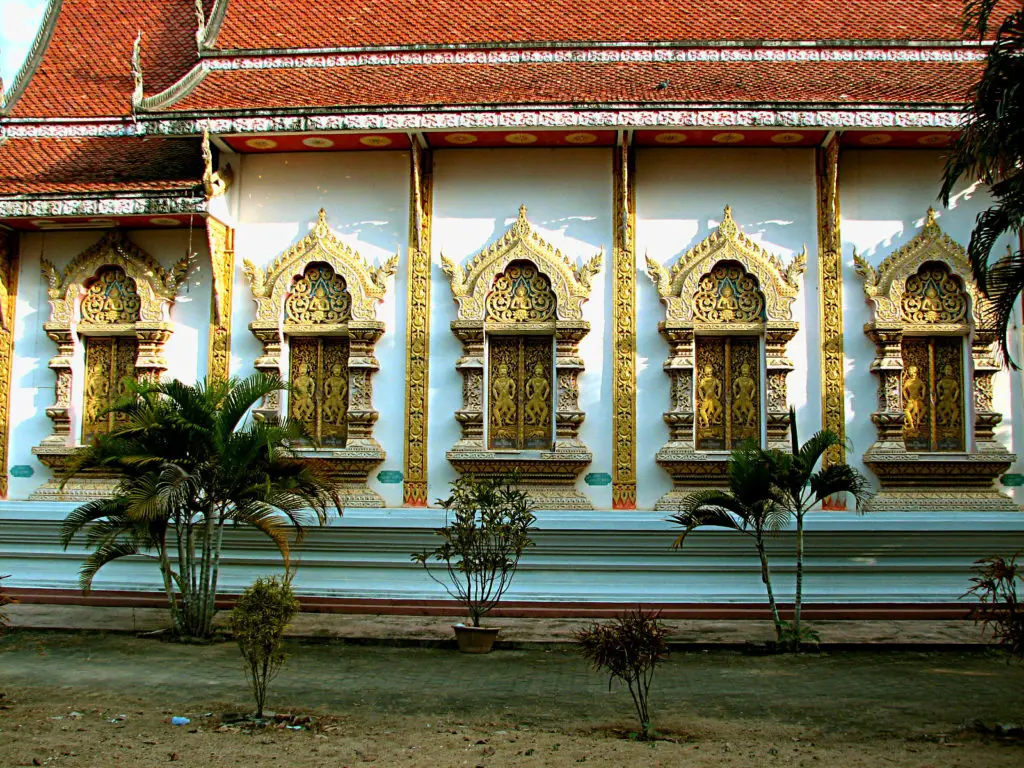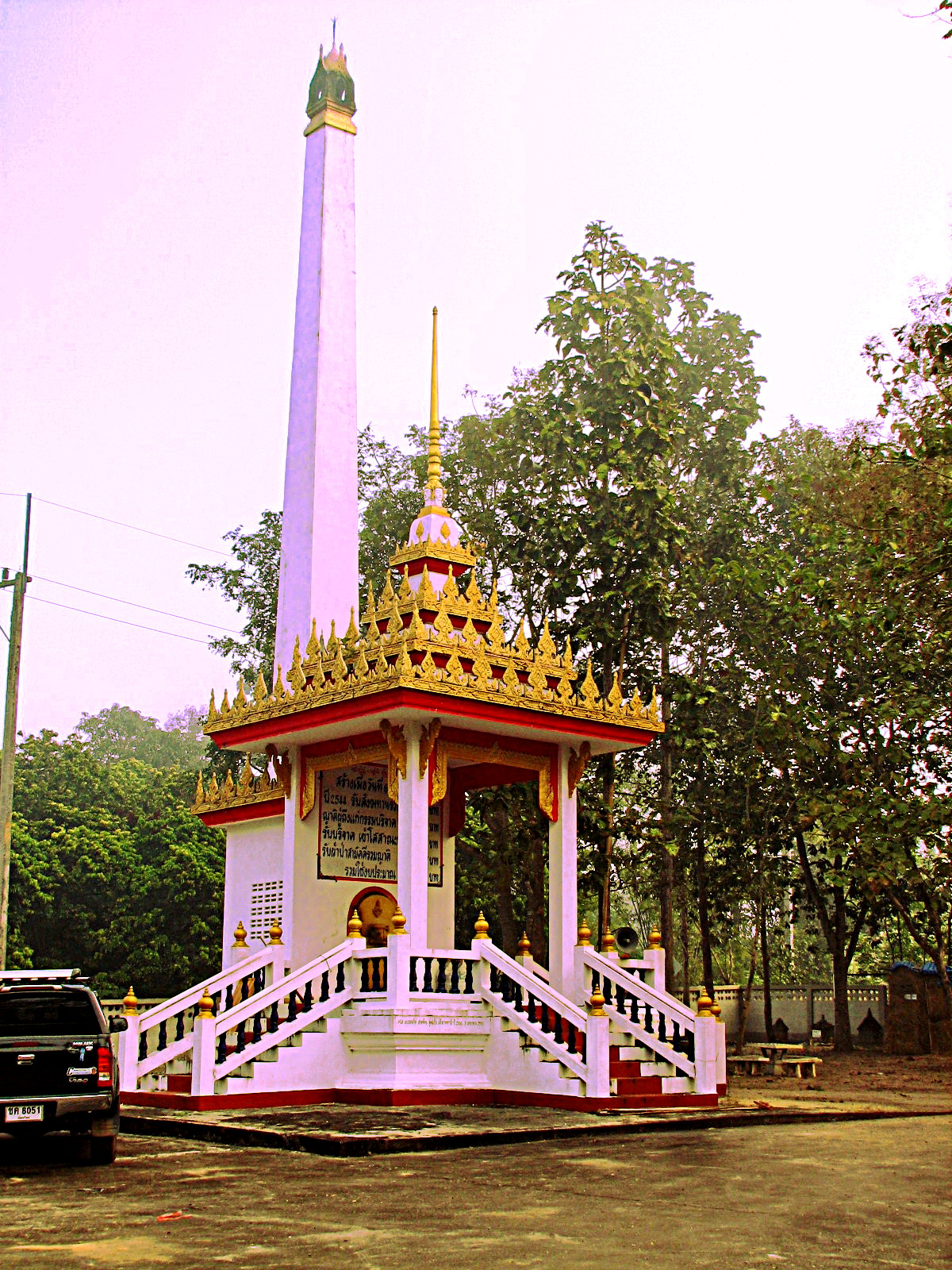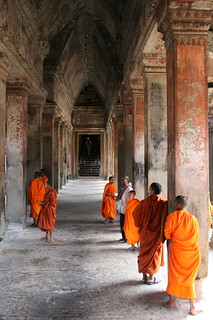Apart from Buddhism and Christianity differences, there are many Christianity and Buddhism similarities. It would be easy for Westerners to assume that the Wat (Temple) in Thailand is the Buddhist equivalent of a church in a Western village . But they would be wrong.
The Wat is not just a place of worship or religious ceremony; it is the focal point of village life. The fundamental differences between the Wat and a church are their differing purposes and significance. This post focusses on the Wat in a village in Thailand and a Church in a village in England.
They are fundamentally the same as those in towns and cities. But there is usually a closer attachment between the wat or a church and the villagers.
How does the Wat differ from a Church?
The Church is a place of worship. And Christianity is based on set routines, whereby formal services are held in Church, on a weekly and often daily basis. It is not, generally, seen as having other purposes.
Buddhism does not have that formality, except on special festivals, and the Wat has many purposes that are not related to Buddhism.
The Wat grounds
On of the first things that happened when the villages evolved was an area of land was given over to be the temple grounds. Sometimes it was a large area and sometimes not. As the village grew so the Wat grew. Depending on how big the Wat grounds are, or how well off the people are determines the number of buildings and the eventual size of The Wat complex.
The quiet simplicity grows as the Wat develops and the temple gardens are cared for. Some ancient Wats have magnificent gigantic trees in the grounds, providing a solitude available to anyone. I often wander through our village temple early in the morning while the air is still cool.
The buildings of the Wat
The Wat is a temple complex consisting of many buildings built for different purposes. Learn more about the structure and terminology in this article.
Here is a brief description of the main buildings in the Wat.
- The Ubosot, main prayer room and ordination hall will be a priority to maintain in good condition, as would be the
- Viharn, where images of the Buddha and his journey are depicted around the walls, like the stations of the cross in Catholic churches.
- There is likely to be at least one Stupa (or Chedi), a bell shaped monument, which will enshrine the remains of the founding monks.
- The residing monks have living quarters in the Kuti, a building that has evolved over the years from a small wooden hut to modern but simple studio apartments.
- There will be a Sala, resting place and open-sided shelter for visitors.
- If it has been preserved the most interesting building is the Ho Trai; the scripture library was traditionally a wooden building on stilts over a pond. They built it that way to keep creepy crawly insects away from eating old scriptures written on dried palm leaves.
The call to serve
When the call to serve the village comes, as it regularly does, it takes precedence over everything. It may be a meeting about the work needed to install a new water system or the organisation of the bi-annual village festival. Other times, it may be one of the many annual Buddhist festivals like Loi Krathong or Khao Phansa. Whatever it is, villagers must heed the call, and most of these things happen in the grounds of the Wat.
Villagers build the Wat
The villagers themselves build the Wat with whatever money and skills they can find. And they continue to maintain and improve it for the benefit of all villagers. Because of this, it has special meaning, and they are deservedly proud of the achievement. Even if their Wat is not as good as the one in the next village they will strive to improve it. Every person is involved in village activities or in assisting to some degree. That is taken for granted and has nothing to do with Buddhism or beliefs.
The hub of the village
So, unlike a Church, the Wat is many things to all the people of the village. Like the motoring world’s ‘MPV’ it’s an ‘MPP’ or multi-purpose place. Its grounds may house the village school. There will probably be no police station or village hall, so the Wat will provide the facilities for whatever functions are undertaken. Like voting in local and government elections, handing out the monthly pension monies (in cash), collecting and issuing the farmers’ loans to fund the rice crops.
Even exhibitions, puppet shows, concerts and the like will be held in the grounds of the Wat. It is the hub, and the Wat itself is central to village life. The Mayor oversees everything and the villagers all pull together to see that whatever is needed is done.
The Wat has no cemetery
In Thailand The Wat does not have a cemetery, which is normally an integral part of a Church. The body of the deceased is cremated following a big party at the family’s house, which often lasts three days. The cremation itself is not held in the Wat unless the crematorium is there, but at another quiet place, usually away from housing and it is a colourful ceremony with fireworks. Unlike most Western funerals, the Buddhist send-off, whilst lengthy, is by no means a sombre affair.
Where are the monks in all of this? Well, they are there if you want to talk or make a donation for the Bhuddist festivals and funeral ceremonies, which normally don’t take place at the Wat unless the family cannot afford a party.
But they are not usually involved in other activities. Huai Kaew village, North of Chiang Mai only has two resident monks. So for big events, they have to call on re-enforcements from other villages.






Thanks Cinda. It’s quite short but it just struck me one day that many people probably don’t understand why there are so many temples in Asia. So I thought I’d write something. You are probably right when you say ‘….closer in function in earlier times…..’. But I think there is a significant difference in that western society revolves around urban, SUBURBAN and rural living whereas Thailand is primarily an agrarian society. So rural and urban are dominant, if that makes sense. I think the Buddhist way is very interesting and I write about my observations in Volume 3 of my Thaialnd Diaries which I will publish after Volume 2 (which is getting close) in about 6 months time. One thing in particular that strikes me is that so many Buddhists, follow the traditions but have never grasped the true meaning of Buddhist teaching. I’m learning slowly!!
This is quite an interesting post. I suspect the western church may have been closer in function in earlier times when everyone in the village was expected to go be part of the church and participate in community affairs. I’m attracted to Buddhism, but have never traveled to your part of the world ( unless I count New Zealand and Rarotonga).